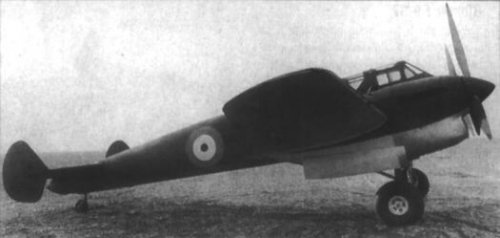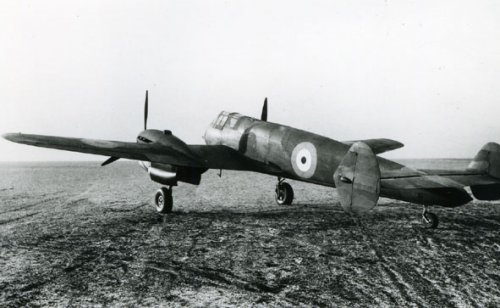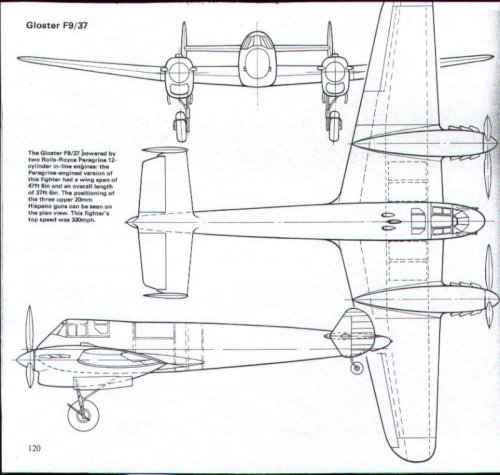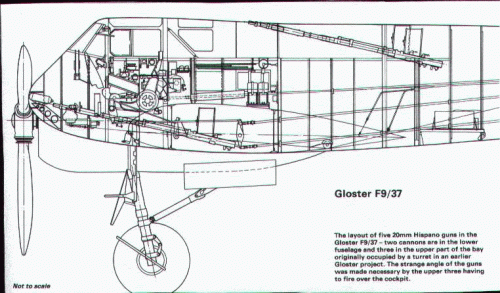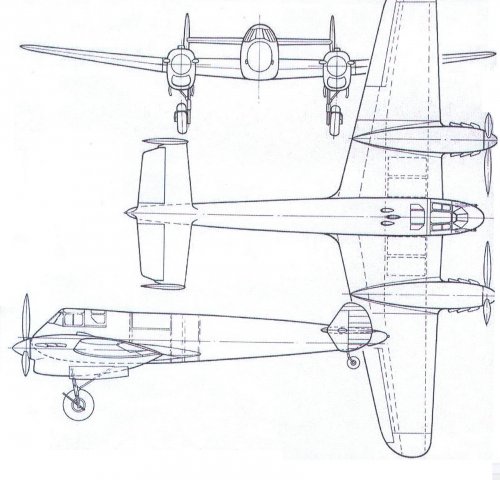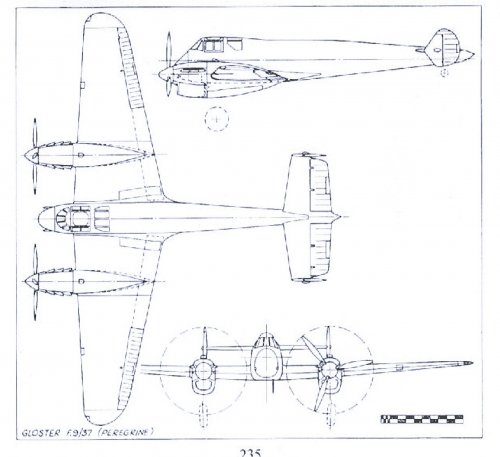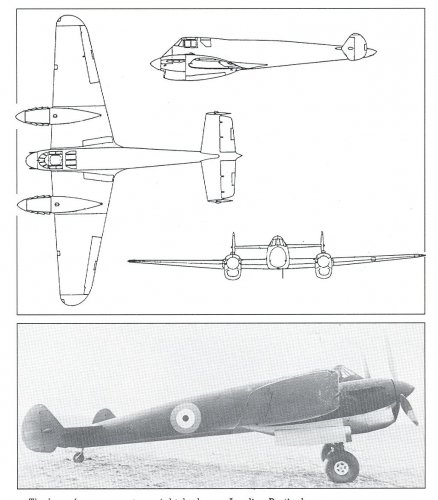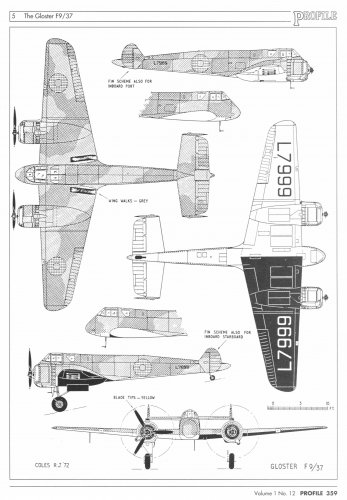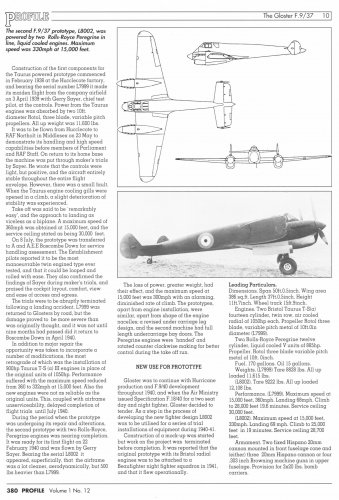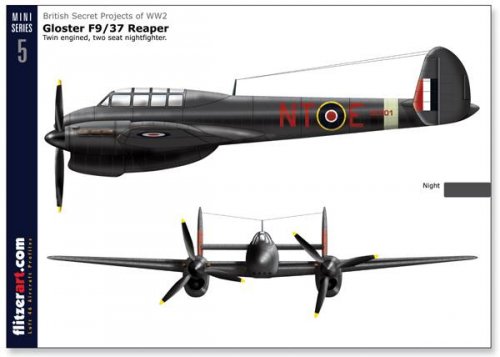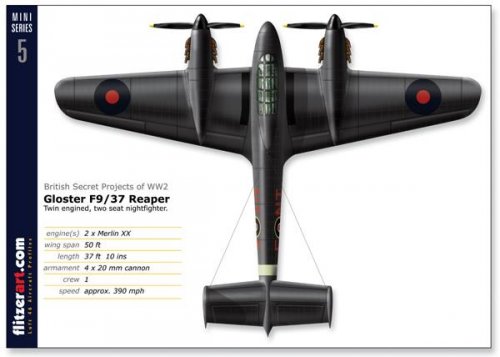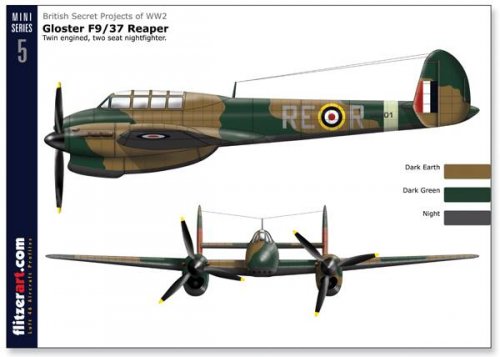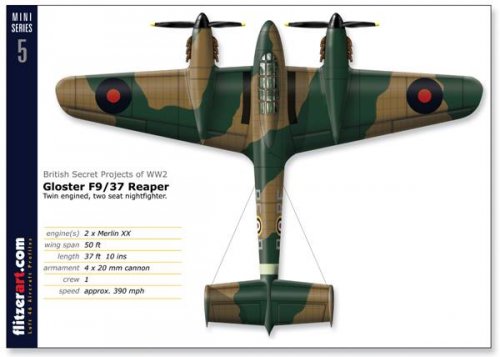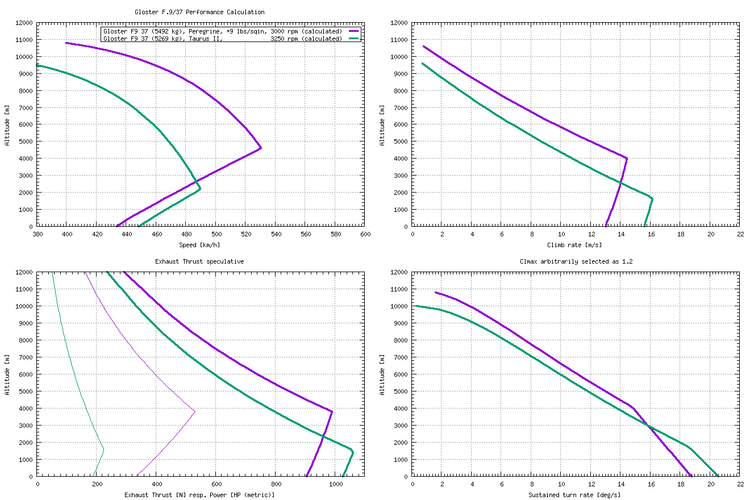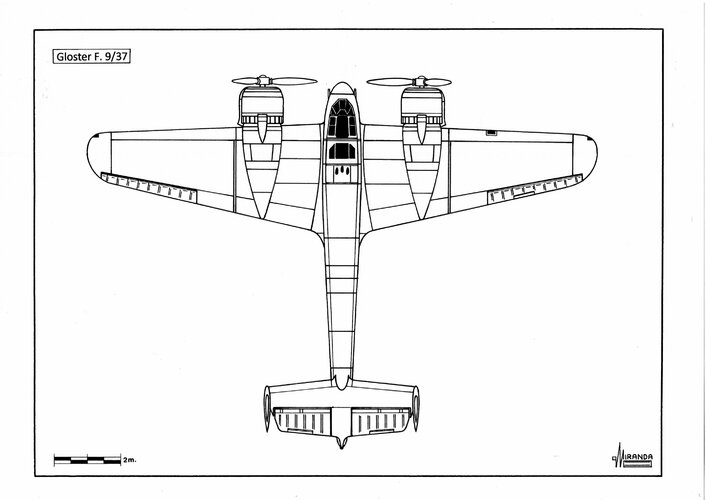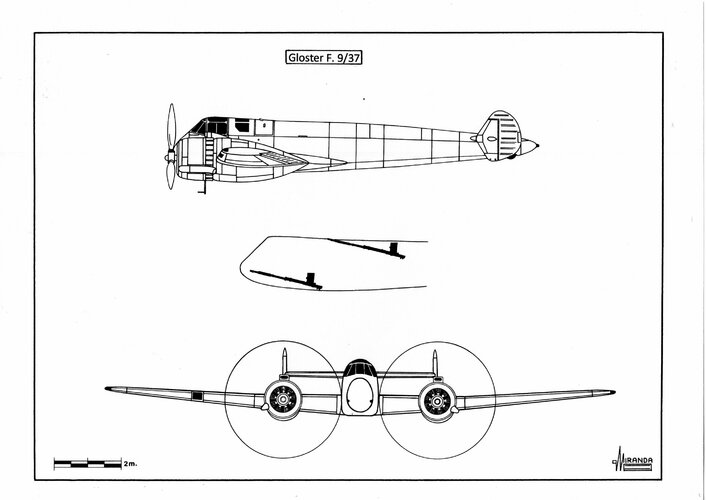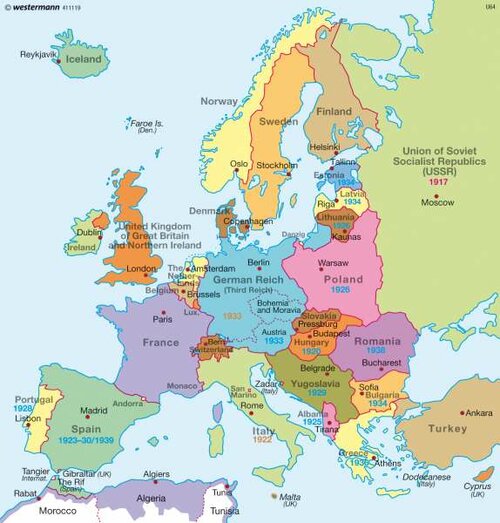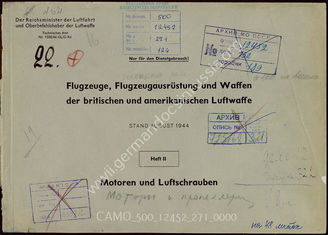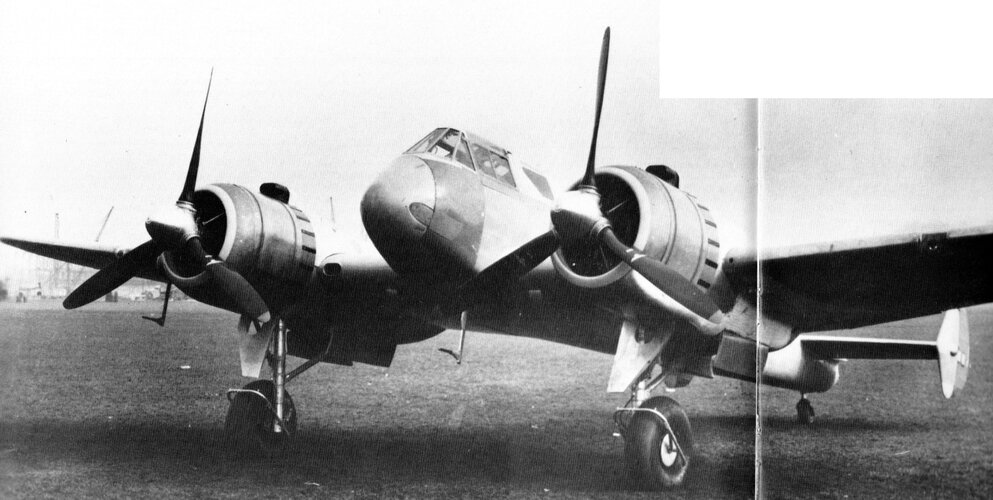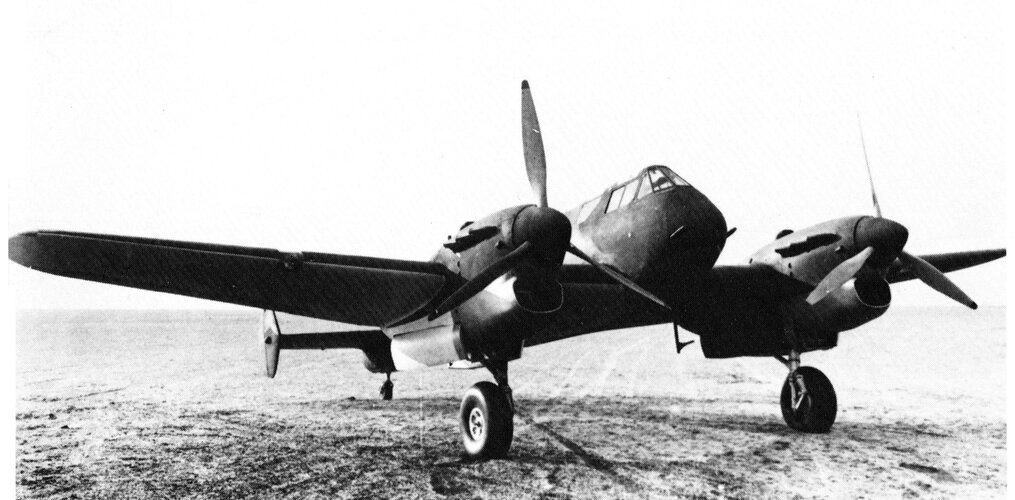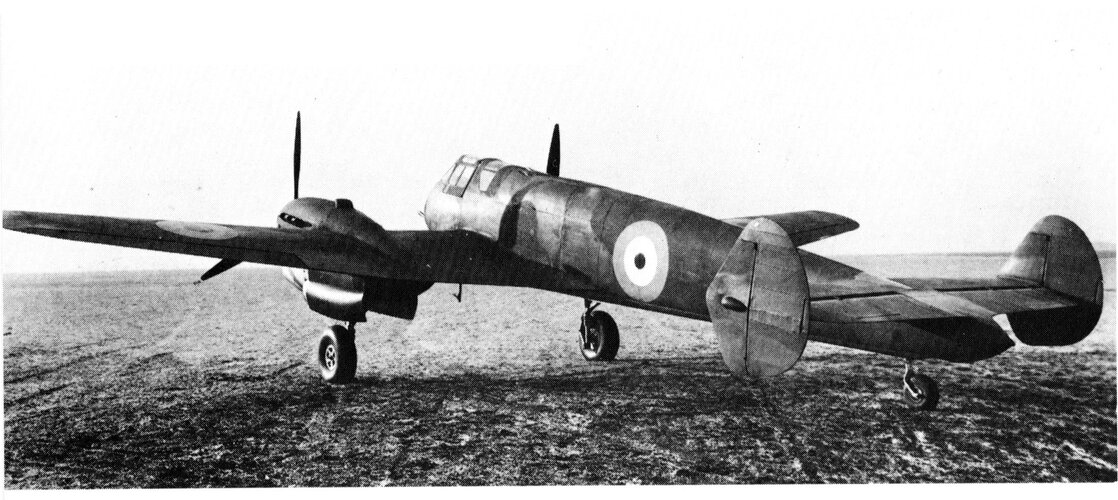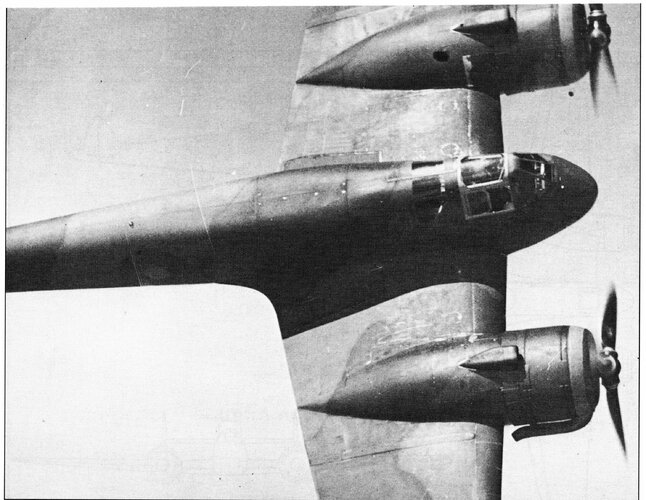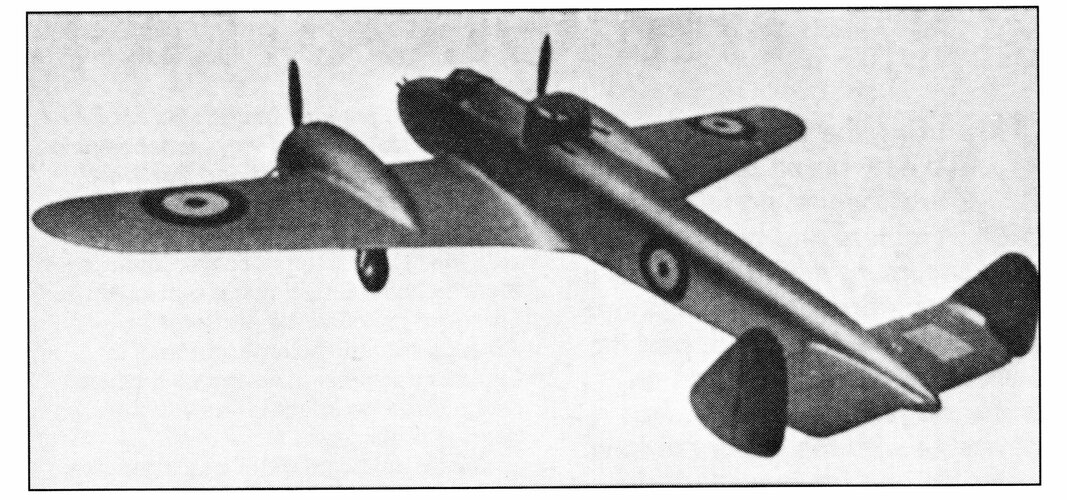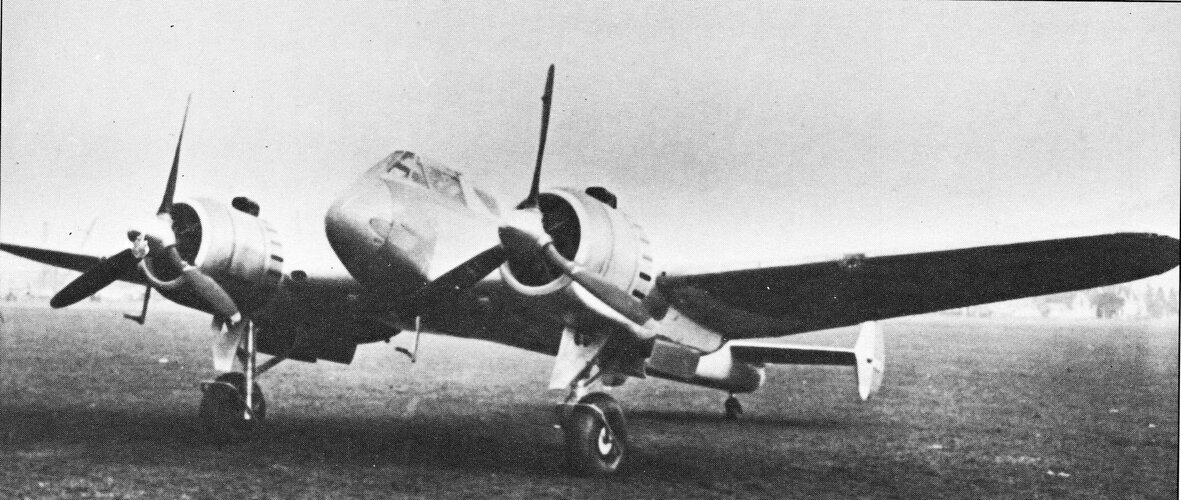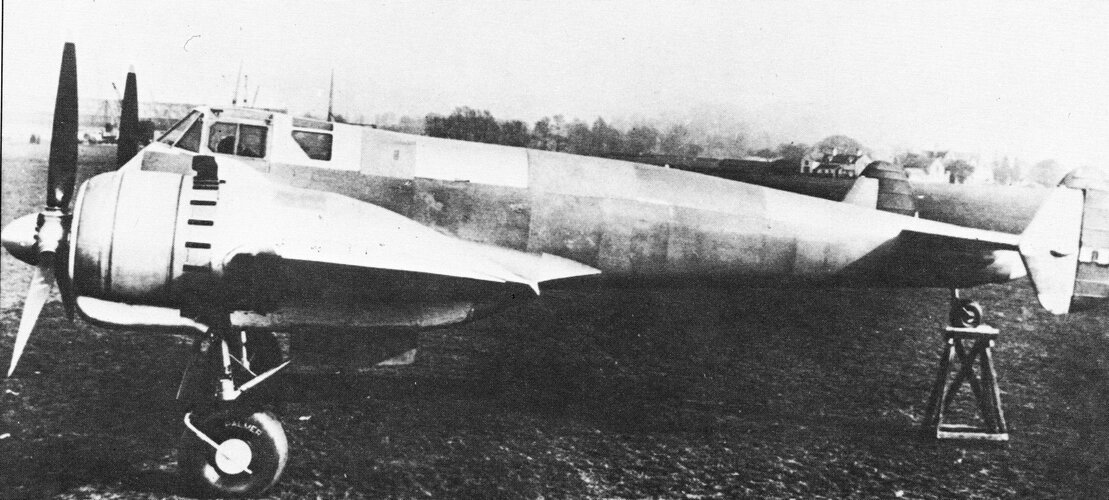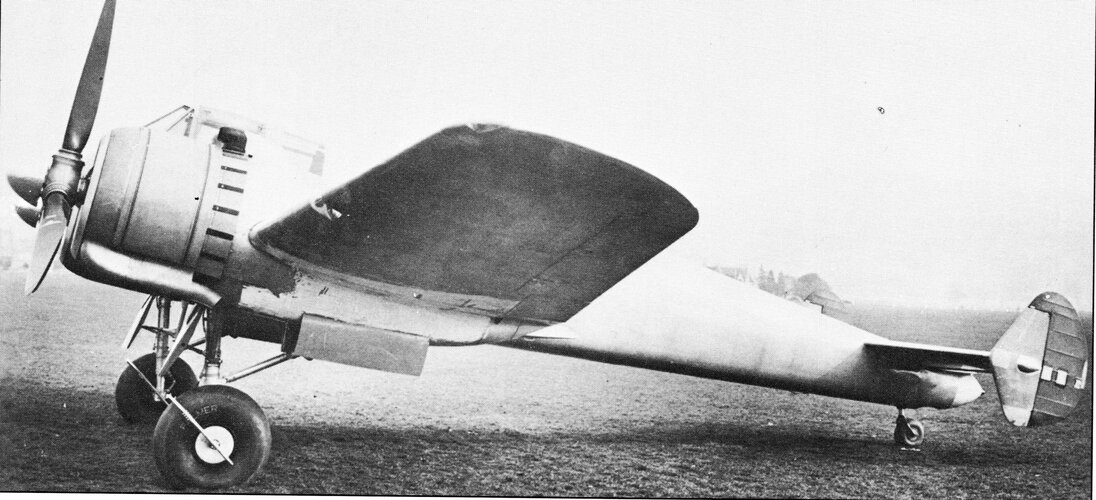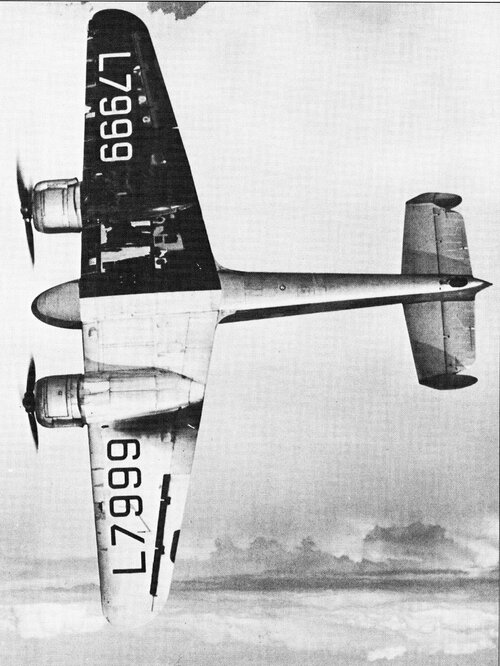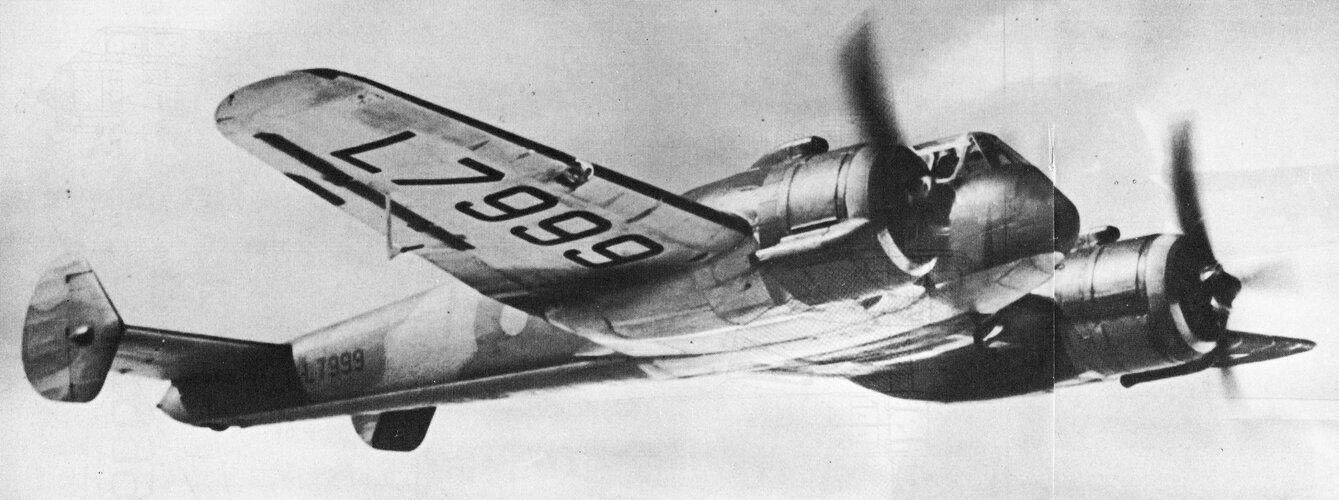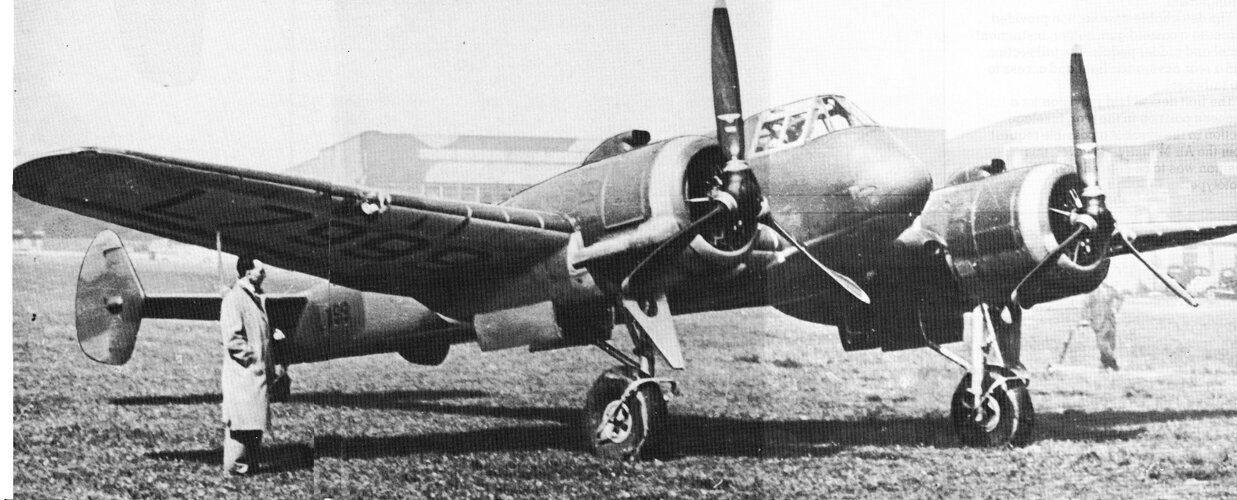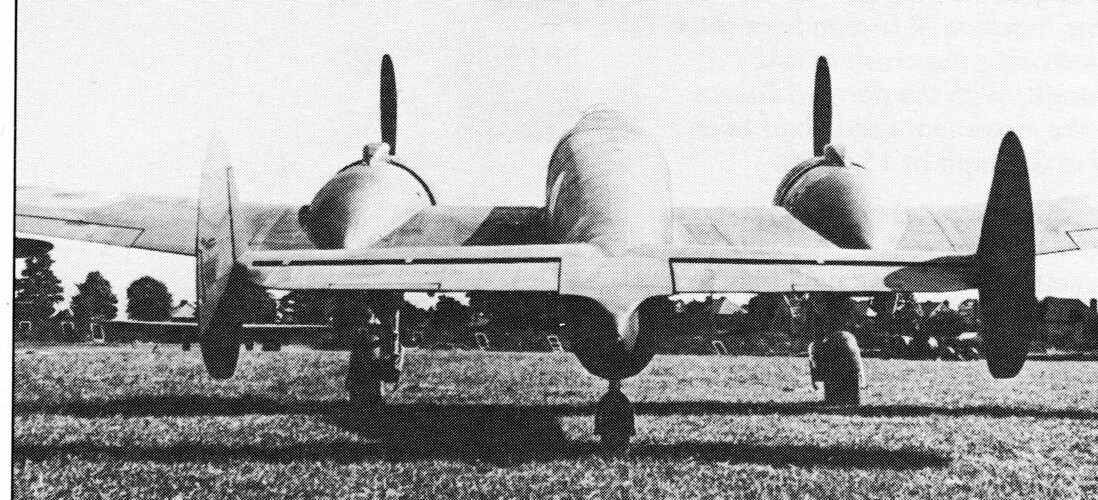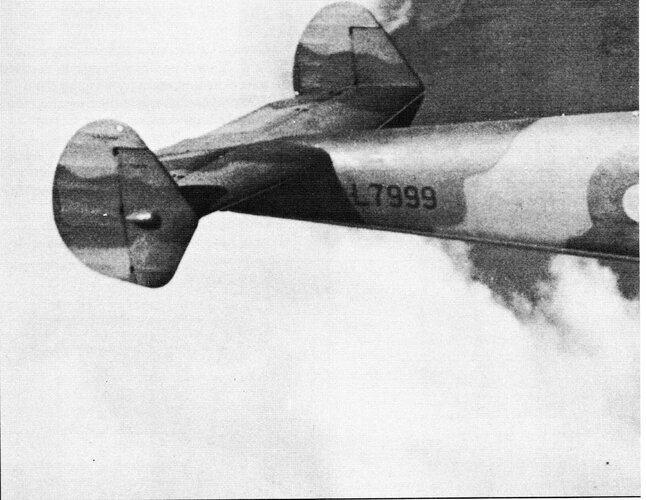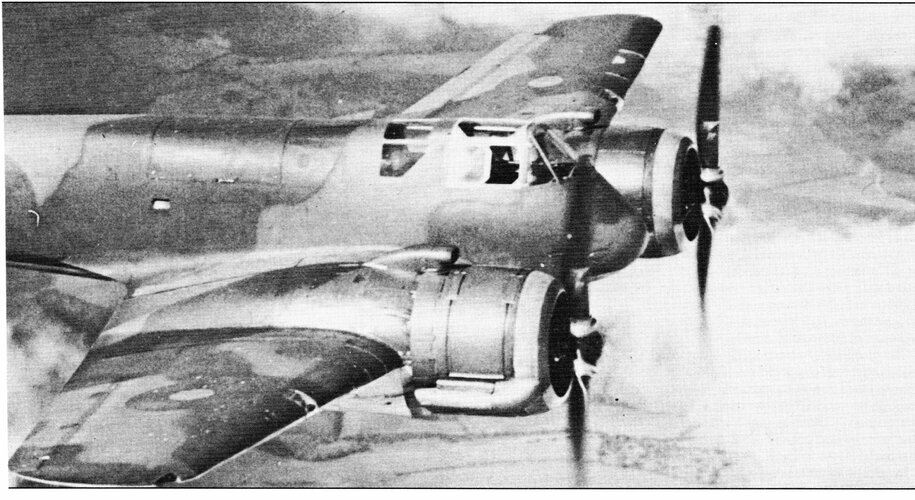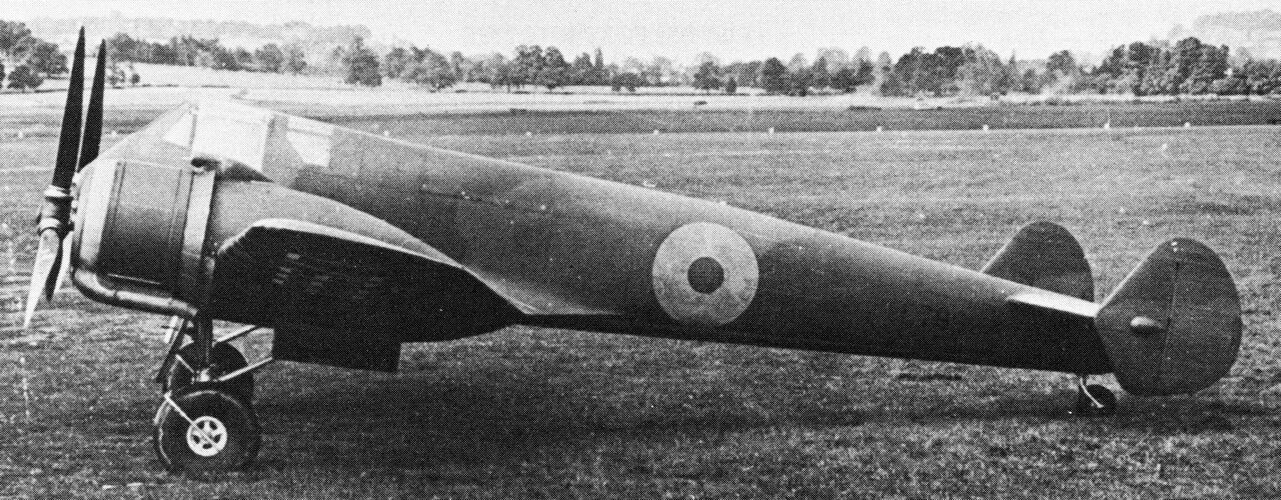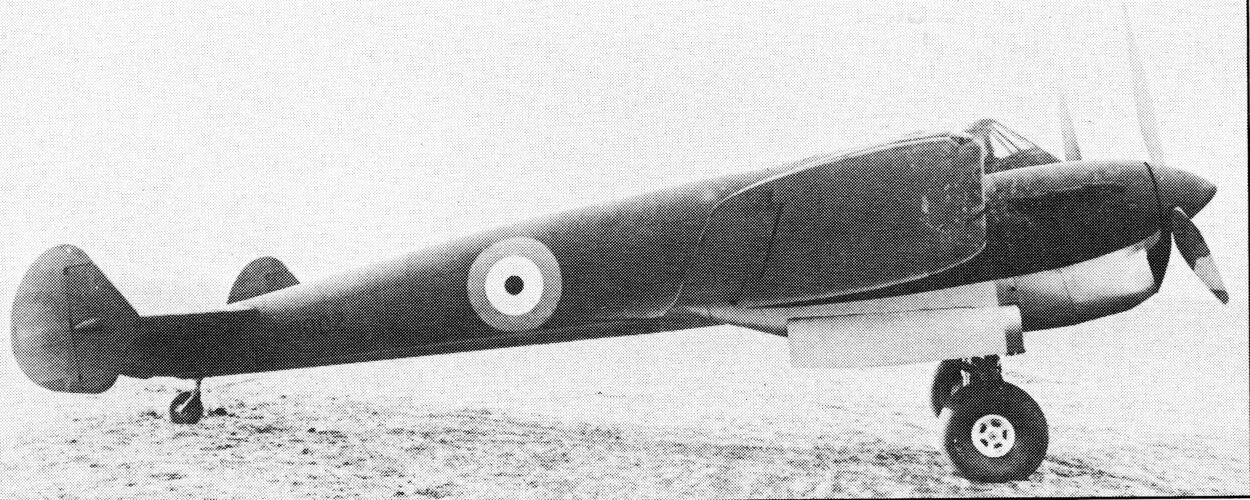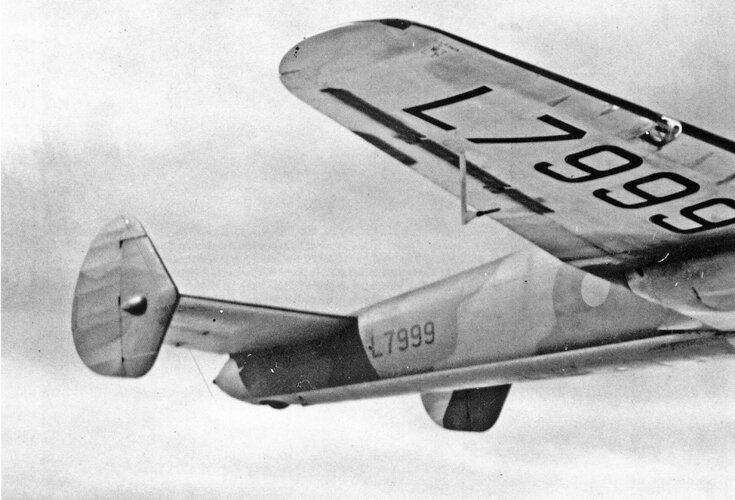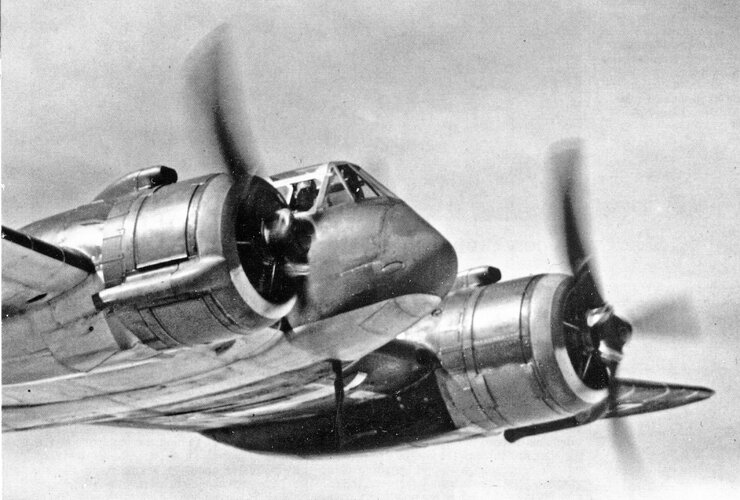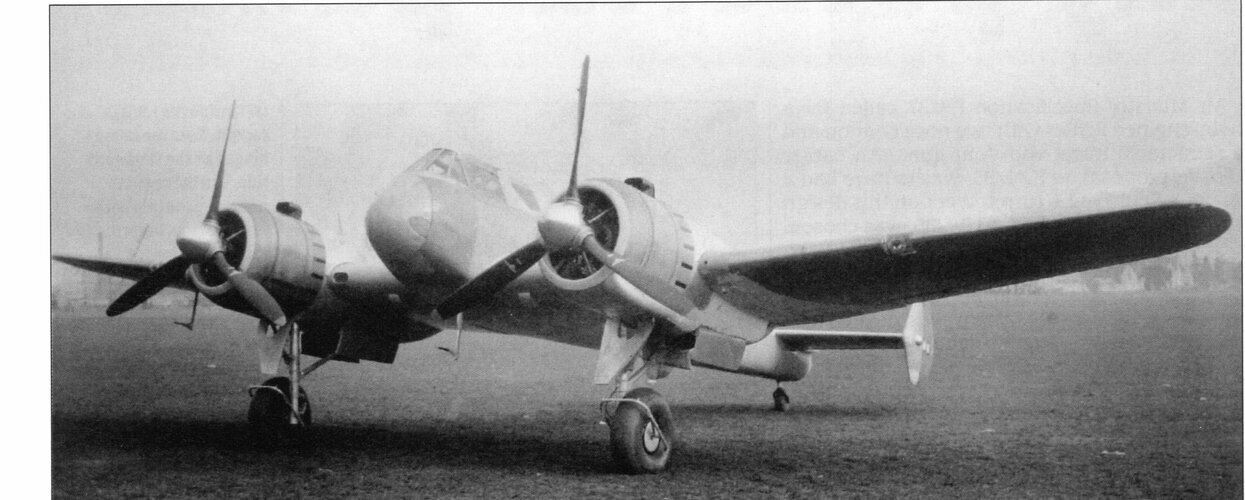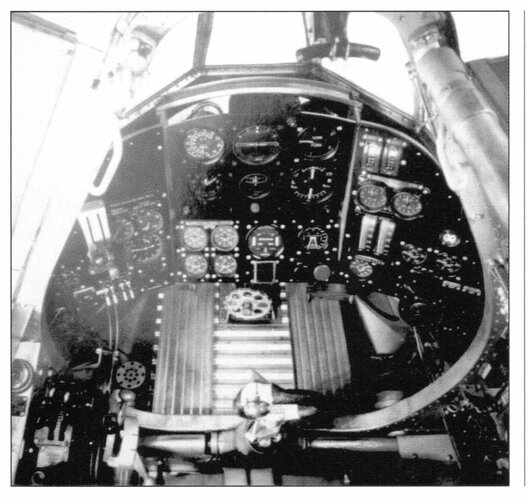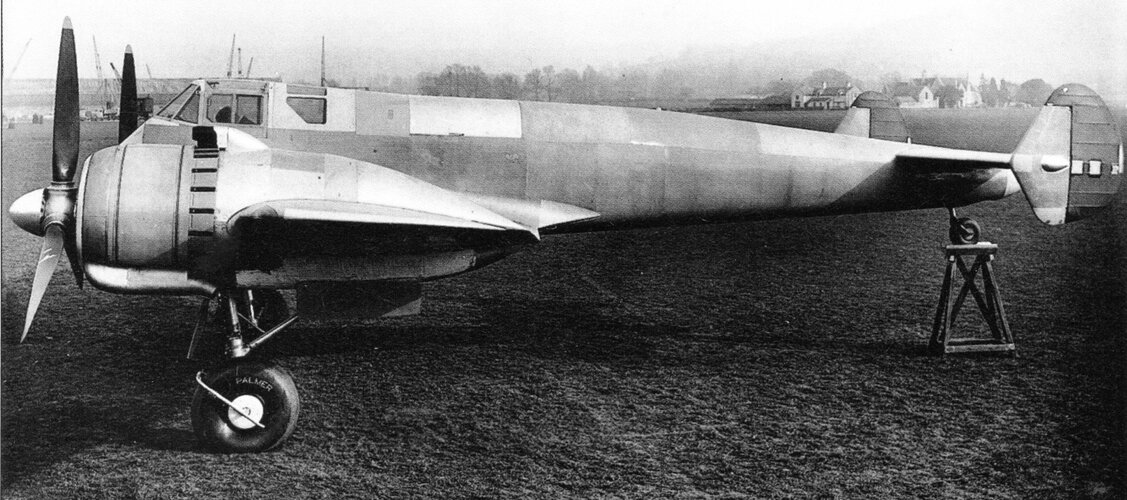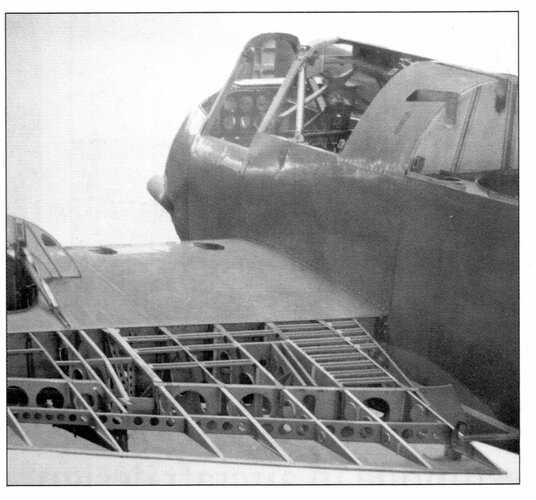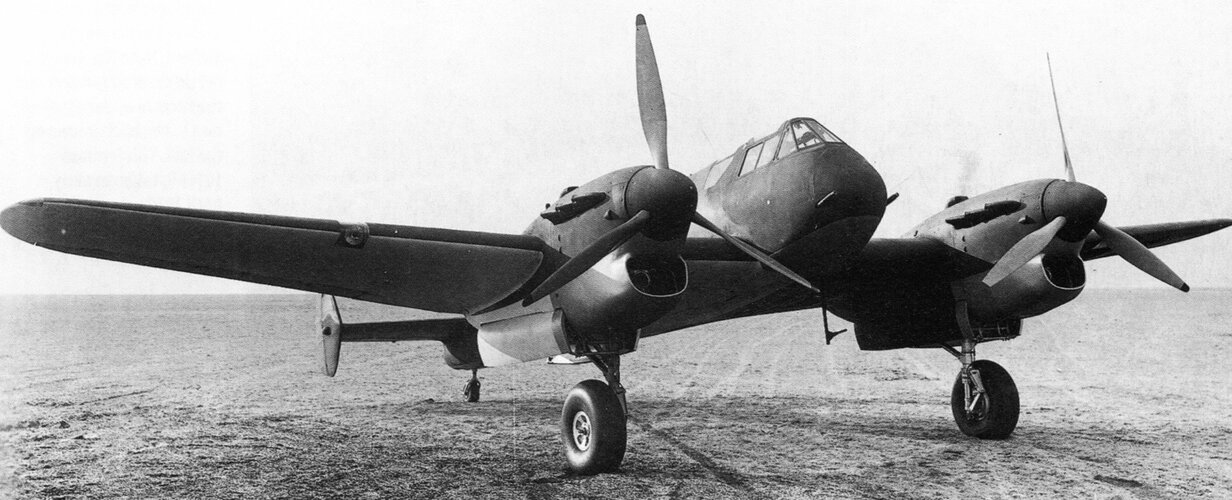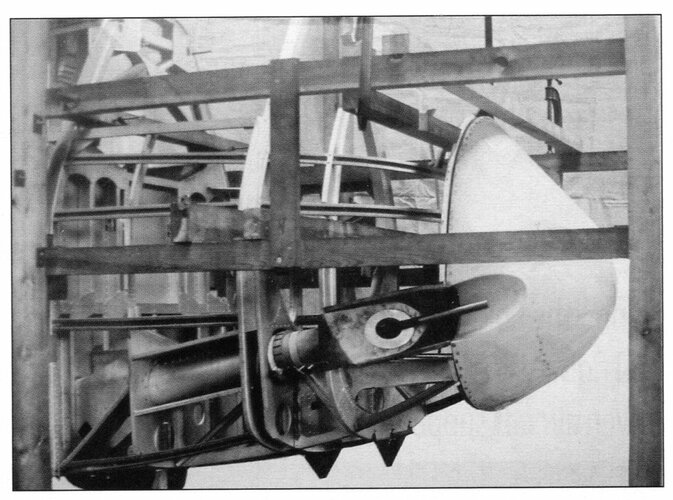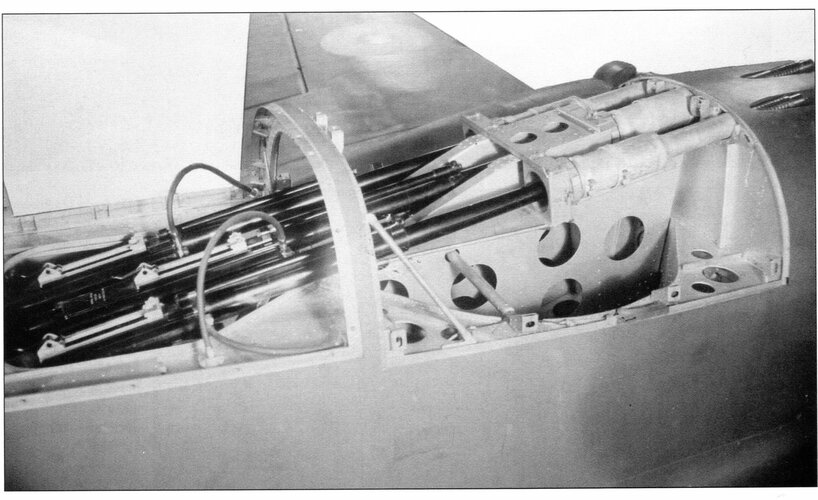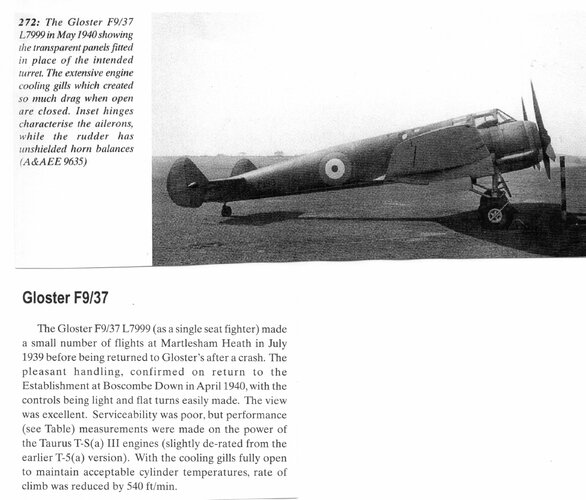Air Ministry Specification F. 9/37 called for a twin-engine day/night fighter, with two nose mounted cannons and a retractable turret with four machine guns, capable of at least 300 mph and reaching 15,000 ft. in six minutes.
When the performances of the new German bombers were revealed the Specifications issued during the 1937/1938 period called for high-speed fighters with a much greater armament.
The Gloster turret design proved to be impossible and was replaced by five 20-mm Hispano Mk. I cannons inclined 12 degrees to the horizontal: two housed under the cockpit floor and three in a dorsal bay to compensate for the weight of the deleted turret.
The Hispano-Suiza Mk. I firepower was limited to a single drum of 60 rounds and to achieve the necessary destructive power, a greater number of guns were used.
This unusual armament configuration was based on the “no-allowance shooting” concept discovered in the early stages of the World War One.
The method is perfect to attack from below the heavy night bombers and it also allowed shooting from a great distance against the day fast bombers.
The increased speed of the targets meant the cannons angle was reduced from 45 degrees in 1917 to 12 degrees in 1938.
Special “non-deflection” gunsights were also designed.
Two F.9/37 prototypes were ordered, the first of these (L7999) was flown on April 3, 1939 powered by two Bristol Taurus T-5 engines, the second prototype (L8002) had been completed with two Rolls-Royce Peregrine engines and made its first flight on February 22, 1940.
During flight tests the L7999 achieved 360 mph showing excellent handling characteristics, but the heavier and underpowered Peregrine engines reduced the speed and rate of climb of the L8002.
The project F. 9/37 was cancelled on December 18, 1940, when production of Peregrines ceased and the Bristol engines were used to power the new Beaufighter.
Gloster intended to enlarge the design to accommodate a radar operator to meet the Specification F.18/40, calling for a two-seat day and night interceptor, but it was never built.
In July 1939 the first prototype was camouflaged in standard day fighter scheme Dark Earth (FS 30118) and Dark Green (FS 34079) upper surfaces, Black/White undersurfaces with serials in opposite tones and four positions Type B low visibility roundels in wings and fuselage sides.
In April 1940 the aircraft was powered by two Taurus T-S and the roundels were replaced by the Type A.
The second prototype paint scheme was Dark Green upper surfaces, Duck Egg Green (FS 14533) under surfaces and four positions Type A roundels.
Gloster F.9/37 (L7999) technical data
Wingspan: 50 ft. (15.25 m), length: 37 ft. (11.29 m), height: 11.6 ft. (3.53 m), wing area: 384 sq. ft. (34.56 sq. m.), max weight: 11,653 lb. (5,279 kg), max speed: 360 mph (579 km/h), service ceiling: 30,000 ft. (9,146 m), power plant: two Bristol Taurus T-5 14-cylinder, radial, air cooled engines each rated at 1,050 hp. or two Bristol Taurus T-S(a)III engines each rated at 900 hp., proposed armament: five 20-mm Hispano Mk. I cannons inclined 12 degrees to the horizontal: two housed under the cockpit floor and three in a dorsal bay
Gloster F.9/37 (L8002) technical data
Wingspan: 50 ft. (15.25 m), length: 37.9 ft. (11.54 m), height: 11.6 ft. (3.53 m), wing area: 384 sq. ft. (34.56 sq. m.), max weight: 12,108 lb. (5,485 kg), max speed: 330 mph (531 km/h), service ceiling: 28,700 ft. (8,750 m), power plant: two Rolls-Royce Peregrine twelve cylinder, Vee, liquid cooled engines each rated at 1,050 hp. or two Bristol Taurus T-S(a)III engines each rated at 885 hp.

